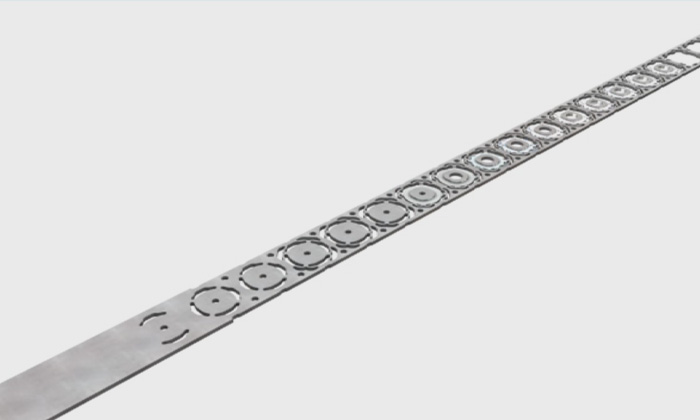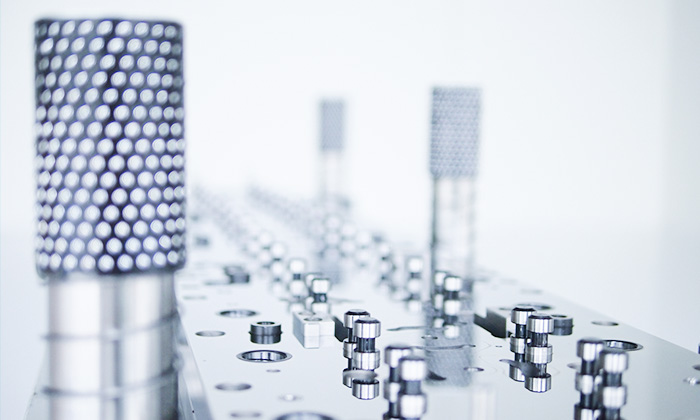TECHNOLOGYTechnology/R&D
Form is proof of an idea.
The proof is to society.
We will continue to develop technologies that cannot be found anywhere else in an environment that cannot be found anywhere else, and with Idea & Technology, we will continue to provide products and technologies that surprise and delight our customers (valuable products and technologies).
-
What is CFP technology?
SYVEC Corporation's CFP technology is a hybrid press technology that combines (1) cold forging and (2) progressive press processing.
View Detail
(1) Cold forging is a technology for forging (crushing) metal at room temperature without applying heat. This technology allows parts to be made into three-dimensional shapes, improving component strength and durability.
(2) Progressive press processing is a technology that sequentially processes metal plates through multiple processes such as trimming, bending, and drawing. This technology allows more complex shapes to be machined.
CFP technology, which combines (1) and (2), has achieved things that could not be achieved with press processing until now. -
Mold technology
SYVEC Corporation manufactures high-quality molds by making full use of high-precision design technology and high-precision processing technology. This technology is used in a variety of fields, including automotive parts, electrical/electronic parts, and medical equipment. SYVEC will continue to work to further improve mold technology and provide higher quality and more efficient molds.
View Detail -
Institute of Value Technology
SYVEC Corporation has the VT Research Institute, a research and development organization that pursues the highest standards of press processing. VT Research Institute has been involved in product development in various fields such as automobiles, home appliances, and electronic components, making full use of the latest equipment and technology. Utilizing this wealth of experience and know-how, we proactively provide proposals and support to our customers from the product development stage.
View Detail
VT Research Institute will continue to pursue and research the pinnacle of press processing and contribute to society by developing products that best meet customer needs.



